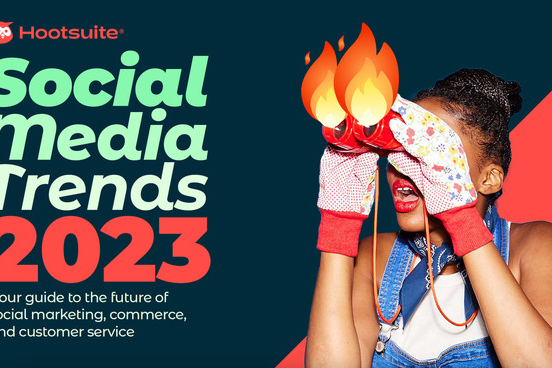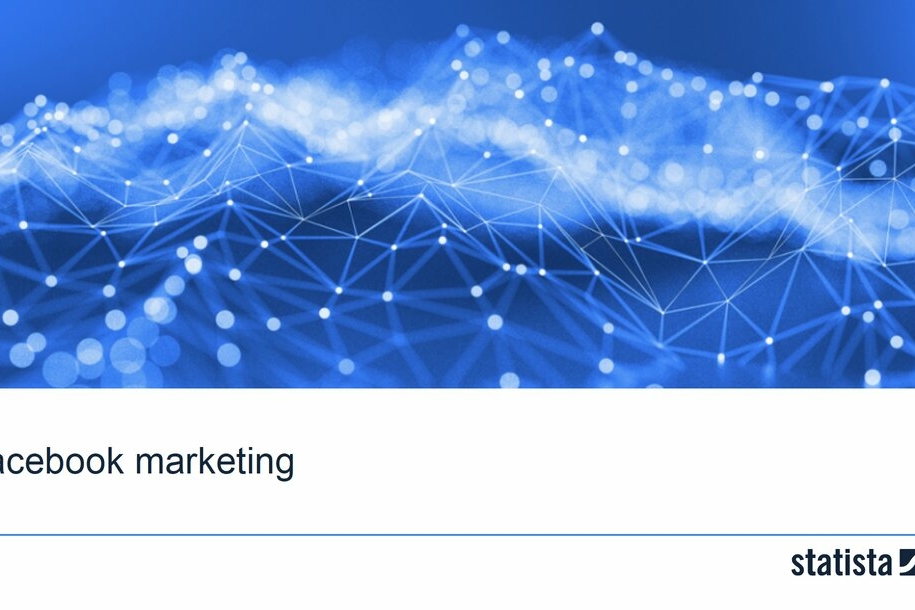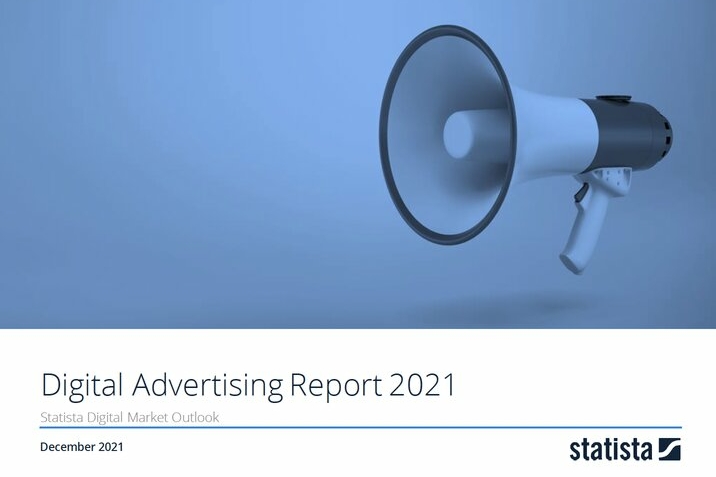According to the 2023 Microsoft Work Trend Index: Annual Report, across the Microsoft 365 apps, the average employee spends 57% of their time communicating (in meetings, email, and chat) and 43% creating (in documents, spreadsheets, and presentations).1 The heaviest email users (top 25%) spend 8.8 hours a week on email, and the heaviest meeting users (top 25%)spend 7.5 hours a week in meetings.
Microsoft surveyed 31,000 people in 31 countries and analyzed trillions of Microsoft 365 productivity signals, along with labor trends from the LinkedIn Economic Graph.
The Three key insights and Findings from the 2023 Microsoft Work Trend Index: Annual Report are:
- Digital debt is costing us innovation
- There’s a new AI-employee alliance
- Every employee needs AI aptitude
We spend more and more of our days separating the signal from the noise— at the expense of creativity. And the tax on individual productivity is compounding, undermining organizational productivity and global GDP.
- Digital debt is costing us innovation
We’re all carrying digital debt: the inflow of data, emails, meetings, and notifications has outpaced humans’ ability to process it all. And the pace of work is only intensifying. Everything feels important, so we spend our workdays trying to get out of the red.
Nearly 2 in 3 people (64%) say they struggle with having the time and energy to do their job—and those people are 3.5x more likely to also struggle with innovation and strategic thinking. And nearly 2 in 3 leaders (60%) are already feeling the effects, saying that a lack of innovation or breakthrough ideas on their teams is a concern. In a world where creativity is the new productivity, digital debt is more than an inconvenience—it’s impacting business.
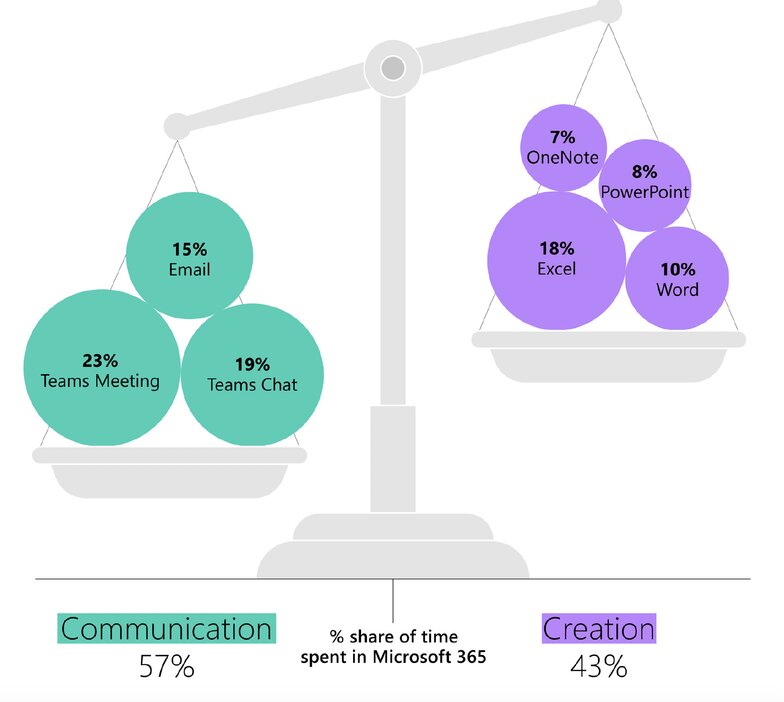
Across the Microsoft 365 apps, the average employee spends 57% of their time communicating (in meetings, email, and chat) and 43% creating (in documents, spreadsheets, and presentations).1 The heaviest email users (top 25%) spend 8.8 hours a week on email, and the heaviest meeting users (top 25%) spend 7.5 hours a week in meetings.2 And this global average includes frontline workers—for knowledge workers, who rely even more on digital communication, the share of the week taken up by emails and meetings is even greater.
With AI, every meeting becomes a digital artifact. When meetings are more than a point in time, you can engage and interact with them when and how it works best for you, whether synchronously or asynchronously.
Top 5 Obstacles to Productivity
The data reveals an urgent need to make meetings more effective— people report inefficient meetings’ as their number one productivity disruptor.
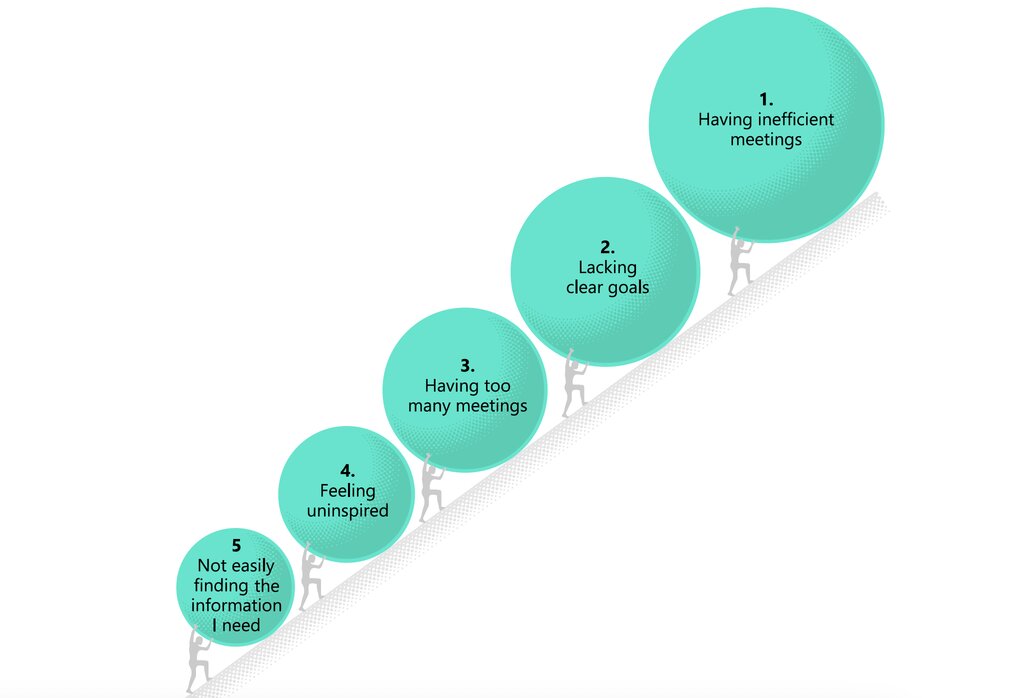
Meetings
People report that the number one productivity disruptor is inefficient meetings, followed closely by having too many meetings at number three. Most people say it’s difficult to brainstorm in a virtual meeting (58%) or catch up if they joined a meeting late (57%), that next steps at the end of a meeting are unclear (55%), and that it’s hard to summarize what happens (56%). And since February 2020, people are in 3x more Teams meetings and calls per week (192%).
Take action
• Identify and address your organization’s productivity disruptors with insights from employee listening.
• Radically rethink the workday. As AI frees up time and energy, protect focus time for the creative work that leads to innovation.
• Think of meetings as a digital artifact and not just a point in time. Encourage people to leverage AI-powered intelligent meeting recaps, transcripts, and recordings to engage with meetings how and when it works best for them.
2. There’s a new AI-employee alliance
While 49% of people say they’re worried AI will replace their jobs, even more—70%—would delegate as much work as possible to AI to lessen their workloads.
Here are the top task people are looking forward to outsourcing to AI
- 3 in 4 people said they would be comfortable using AI for administrative tasks (76%),
- Most people also said they would be comfortable using it for analytical (79%) and even creative work (73%).
- People are also looking for AI to assist with finding the right information and answers they need (86%), summarizing their meetings and action items (80%), and planning their day (77%).
- People also believe it can enhance creativity, from formulating ideas for their work (76%) to editing their work (75%).
After “increasing productivity,” leaders’ top hopes for AI are to: help employees with necessary but repetitive tasks, increase employee wellbeing, eliminate employee time spent on low-value activities, enhance employees’ capabilities, and accelerate employees’ pace of work.
AI’s Productivity Promise
Amid fears of AI job loss, business leaders are 2x more likely to choose ‘increasing employee productivity’ than ‘reducing headcount’ when asked what they would most value about AI in the workplace.
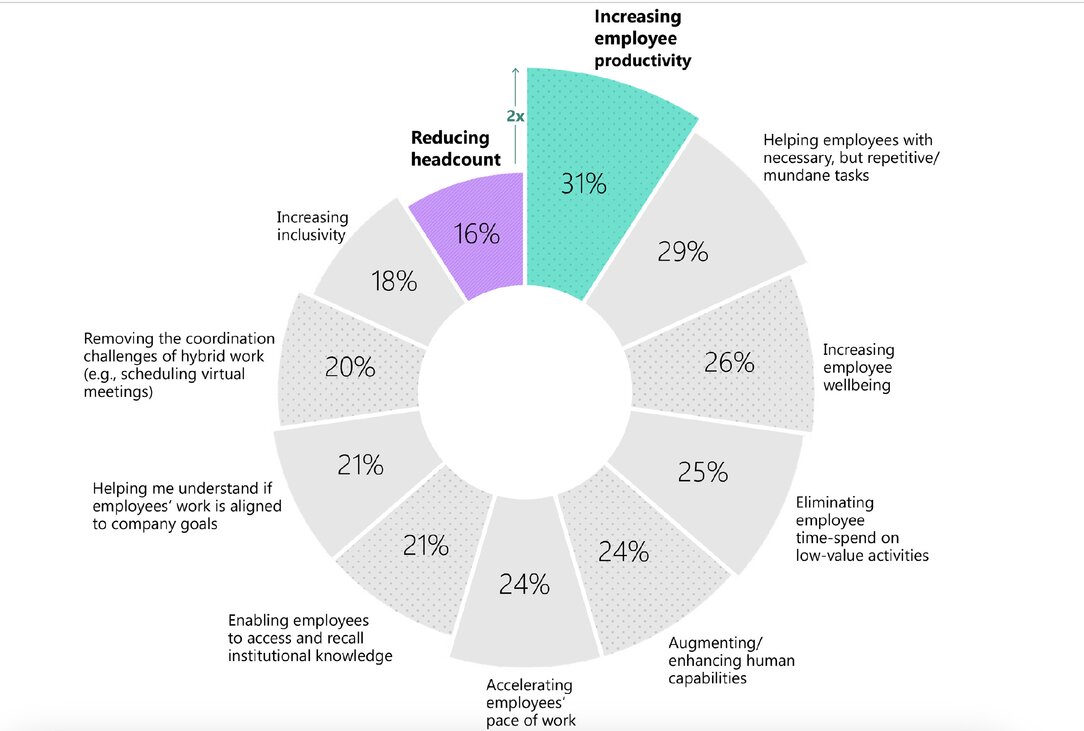
Work in 2030: What People Want—That AI Can Deliver
Asked to imagine work in 2030, people Microsoft surveyed say they’d most value changes that saved them time—like producing high-quality work and learning new skills faster.
Take Action
- Bring leaders together across the organization to create guardrails that help people experiment safely and responsibly with AI.
- Be intentional and programmatic. Like any platform shift, adopting AI at scale requires change management. Pick specific disciplines, processes, and workflows test and learn, and identify evangelists to lead the charge.
- As you begin to adopt AI, deploy it where people need the most relief based on your organization’s pain points and challenges.
3. Every employee needs AI aptitude
As AI reshapes work, human-AI collaboration will be the next transformational work pattern—and the ability to work iteratively with AI will be a key skill for every employee.
Already, 60% of people say they don’t currently have the right capabilities to get their work done. AI will open new paths for learning, and success depends on leaders equipping employees for an AI-powered future.
New Skills for a New Way of Working
‘Analytical judgment,’ ‘flexibility,’ and ‘emotional intelligence’ top the list of skills leaders believe will be essential for employees in an AI-powered future.
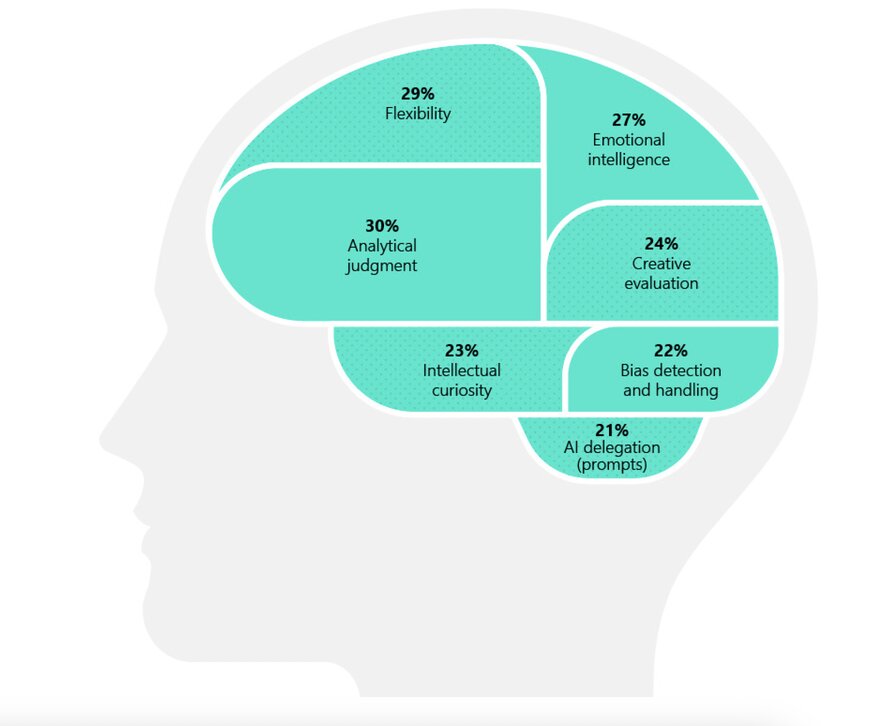
Take action
- Help people embrace a new way of working, starting with building AI aptitude—from practicing prompt engineering to fact-checking and verifying AI-generated content.
- Leverage learning resources and crowdsource best practices from employees as they adapt to AI as copilot.
- Consider how roles and functions can evolve alongside AI, creating opportunities for reinvention.
Need help with developing a digital strategy for your business? Get in touch.
